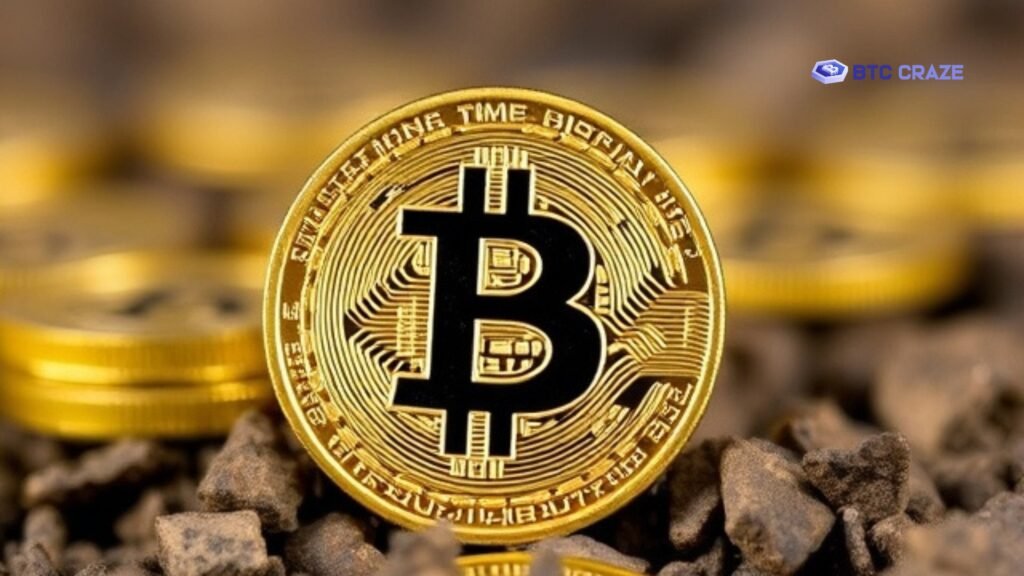As we approach the fourth Bitcoin halving time event, past performance suggests that the cryptocurrency will likely experience a post-halving surge. Approximately every four years, there is a halving event that occurs with Bitcoin. During this event, the amount of bitcoins released as mining rewards decreases by 50%. The Bitcoin reward at the moment is 6.25 BTC. This incentive will decrease to 3.125 BTC following the fourth halving, though. Consequently, there will be an increase in demand from investors as the supply of Bitcoins becomes even more limited. The reason is that there will never be more than 21 million Bitcoins in circulation due to the cryptocurrency’s finite quantity.
With the next halving anticipated for April 19th or 20th, there will be a total of three Bitcoin halvings so far. On May 11, 2020, Bitcoin underwent its most recent half, following halvings on July 9, 2016, and November 28, 2012. Approximately once every 210,000 blocks, the Bitcoin blockchain software is programmed to do one of these halvings. Predicting the exact timing of the next halving event is extremely difficult because of the ambiguity around the time required to mine the next 210,000 blocks following the previous halving event.
But if you look at how long it often takes to mine one block, you can get a ballpark figure. Bitcoin blocks take 10 minutes to mine, and as of April 11, 17,834,327 have been mined. According to a Bitfinex report from April 15, investors may be buying Bitcoin in hopes of a price spike. Last week, the quantity of Bitcoin leaving exchanges reached its highest point since January 2023, just as the Bitcoin halves approached.
The halving is set to take place by Saturday, April 22, 20. At the same time, the stock of Bitcoins that haven’t changed hands in over a year—that is, the overall amount of BTC—has dropped dramatically. This points to a significant turning moment in the market. On Friday, April 12, 6,767 BTC left centralized exchanges, the highest day outflow since January 2023. This trend suggests that investors are storing their Bitcoin holdings in cold storage and buying more in hopes that its price will rise after the mining incentive is half and fewer Bitcoins are available.

Bitcoin holders are acting similarly to December 2020, before the market exploded. Based on this trend, it looks like we’re about to embark on a similar growth spurt. Investors known as “long-term holders” (LTHs) have been selling their Bitcoin at a rate of approximately 16,800 BTC each day over the past month. These individuals have kept their Bitcoin for longer than 155 days.
Will Bitcoin rise after the 2024 halving?
In the months after a halving month, Bitcoin values often keep going up, typically for seven months. This rise may be a sign of a market crash, but long-term investors are selling BitCoin to profit from the post-halving profits. Bitcoin saw huge jumps and record highs before the halving, so analysts expect slightly different price variations. Therefore, it appears that the entire price cycle that often precedes this event has become significantly shorter.
“This cycle’s halving is unique,” emailed Reed Smith partner Brett Hillis. Previous halvings raised prices, but Bitcoin is nearing record highs. Price volatility is possible, but it’s unclear if it will limit price growth. Under these conditions, cryptocurrency ecosystem conflicts could skyrocket. Hong Kong’s ETF licensing has raised spot Bitcoin prices after the SEC approved them in January. Government-approved retail bitcoin investment products lessen volatility. The US and Hong Kong allow regulated private investors to buy ETFs, but European markets have had to adapt.

EU companies cannot buy Bitcoin ETFs under the UCITS framework. “The absence of a regulatory regime that enables Bitcoin ETFs has led the EU market in a different direction, which is the listing of various digital asset exchange-traded notes.”
Why prices may not surge this time
Bitcoin’s price didn’t climb following the last halving because the US Federal Reserve had a more forgiving monetary policy in 2020. Thus, interest rates were low then. But that has changed substantially in recent months due to the US Federal Reserve boosting interest rates to fight rising inflation. Interest in US Treasuries and other investments and assets that pay interest has increased due to higher interest rates.
Thus, investors have been wary of risky assets like Bitcoin and other cryptocurrencies. There are rising suspicions that the US Federal Reserve will lower rates in the coming months. So, unless rates are decreased, investors could be hesitant to put as much money into Bitcoin. Many investors are hesitant since they can’t afford basic living expenses and mortgages, lowering their discretionary income.
In this scenario, investors may seek out inflation hedges like gold and other precious metals in addition to interest-bearing investments. Even though Bitcoin is the most famous cryptocurrency, its rising popularity has made it one of the most expensive to invest in. This could be another obstacle for new investors trying to get in on the action. Other cryptocurrencies, such as Binance Coin, Ethereum, Tether, and XRP, have been posing a serious threat to Bitcoin’s market share. Bitcoin alternatives may offer privacy, smart contract functionality, and faster transaction speeds at a lower cost.
[sp_easyaccordion id=”5023″]

